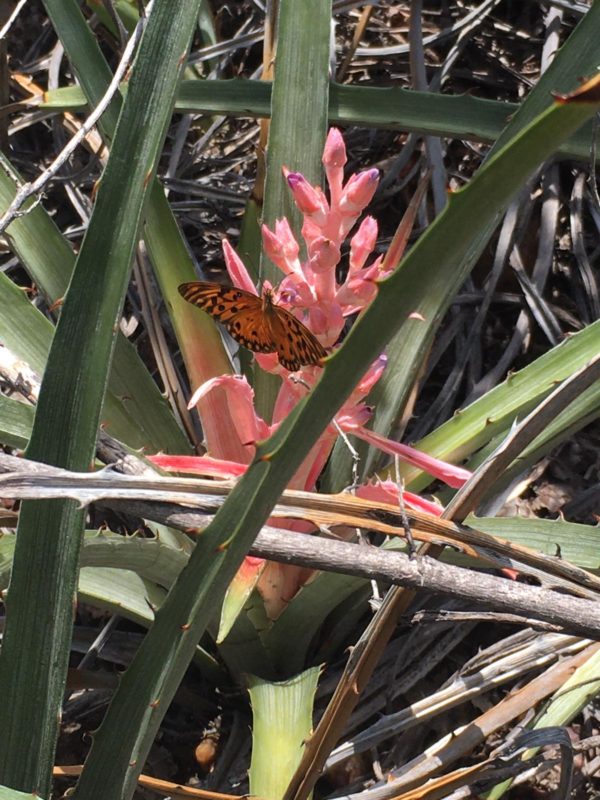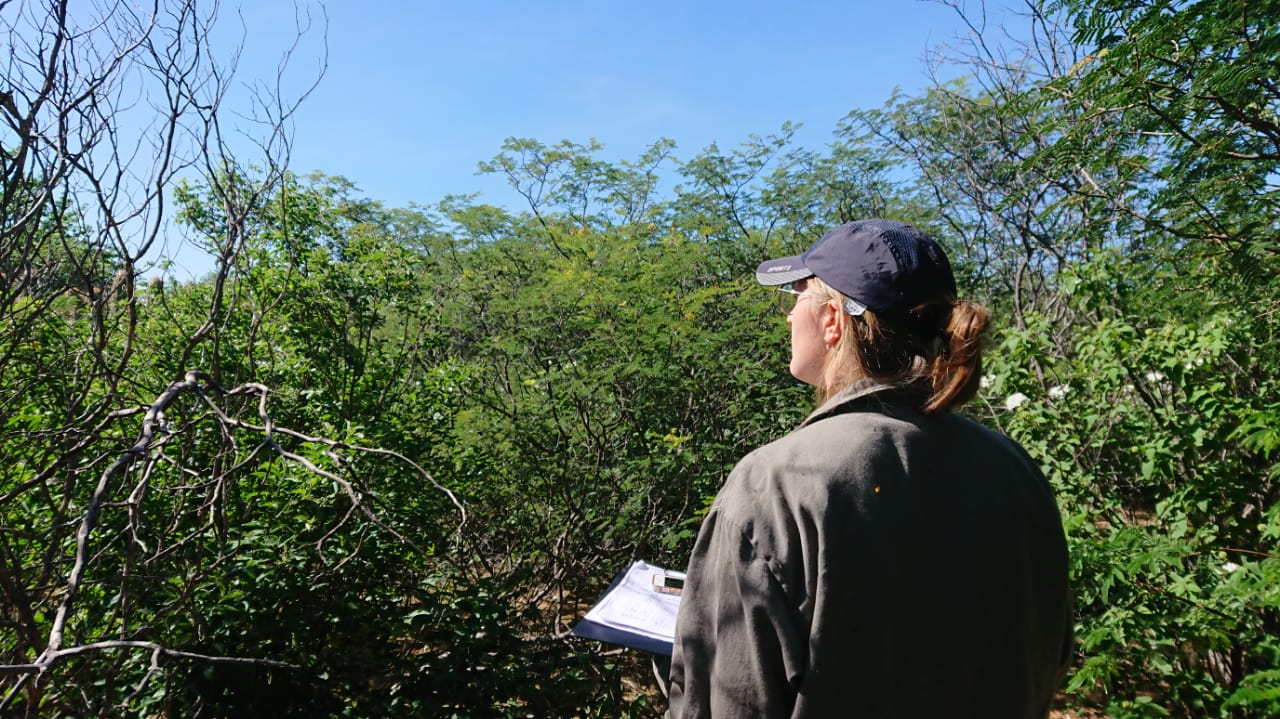Natalia’s first field season is underway
SUFICA PhD student Natalia arrived in Petrolina, Brazil, a week ago. In the first week of fieldwork, Ándres Munoz, a post doc from Chile, has been showing Natalia around SUFICA farms, introducing her to the farmers and together they have started her first bird surveys.
It is the wet season in Brazil so the Caatinga, tropical arid forest, around the farms is very green with many flowers. This also means that birds are breeding around the farms.
Ándres and Natalia have started doing bird surveys and have recorded dozens of species already (a blog post dedicated to this will come soon). This season, Natalia is trialling a recently developed monitoring tool, called the Audiomoth, which records the songs and calls of wildlife, including birds and bats. Audiomoths have been used in a variety of systems but not a tropical arid habitat, like north-eastern Brazil. Natalia will be deploying Audiomoths across grape farms and the Caatinga along a distance gradient to monitor bird and bat species richness. This method has many advantages, the biggest one being the ability to collect vast amounts of data simultaneously, which could prove crucial in a project spread across multiple farms, like SUFICA.
One of the aims of Natalia’s project is to understand how bird communities change across agricultural landscapes (e.g. across a distance gradient away from the native vegetation, Caatinga). This is why Natalia will be performing point counts along transects on farms and in the Caatinga over the next month. This will hopefully shed light on the factors that impact birds’ community structure in a perennial tropical fruit system with the aim to inform future sustainable agriculture strategies.
For more frequent updates, please follow:
Natalia on Twitter @Nat_B_Zielonka
SUFICA project on Twitter @SUFICA_Caatinga
Ándres Munoz on Twitter @amunosaez
Natalia Zielonka
14.02.20




